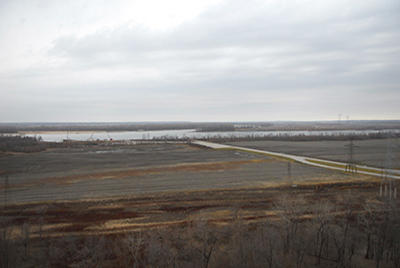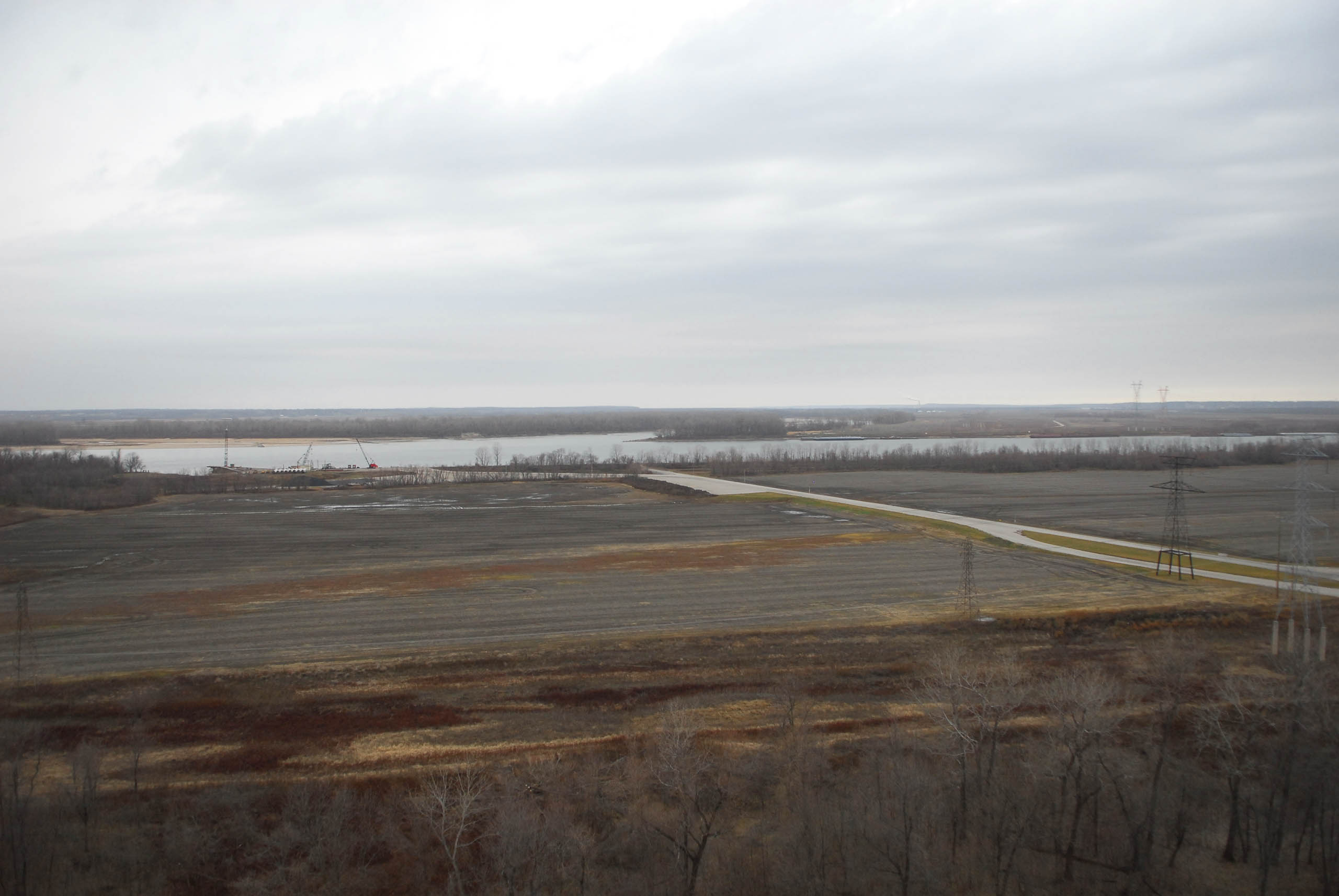



Given the immensity of its geographic and historical importance, the confluence of the Missouri and Mississippi Rivers is a surprisingly boring thing to behold from the ground. Of course, this has more to do with the limits of our temporal and visual horizons–as this is a site that requires a conceptual and abstract understanding of the merging of an entire continent’s waters. This geographic moment can explain much about the territorial and urban history of America–from pre-contact settlement to exploration to internal improvements to nineteenth-century industrialization.
Father Charlevoix, writing in 1721 in the epistolary Journal d’un voyage of his travels in New France, reflects:
”I believe this to be the most beautiful confluence which can be seen in the world. The two rivers are of almost equal size, each half a league in width; but the Missouri is much the more rapid and it appears to enter the Mississippi in triumph, through which it bears its turbid waters even to the other shore without mingling them. It communicates to it that color which the Mississippi never loses, and hurries it with precipitation even to the sea.”
To access this site, at the “T” intersection at the entrance of the State Historic Site, instead of turning south toward the visitor’s center, turn north to mount the levee and follow it around to the former Lewis and Clark State Memorial. In the low-water seasons, one can turn off at the first descent to park and access a muddy path leading to the river’s edge—and a direct view of the vast confluence of the Missouri and Mississippi Rivers.